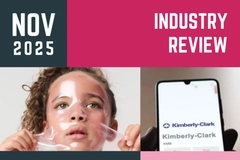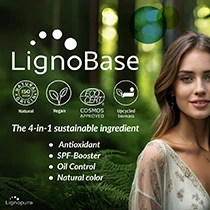FEBEA launches water conservation guide for sustainable cosmetic manufacturing

26 Mar 2024 --- The Federation of Beauty Companies (FEBEA), France, releases a water conservation guide for cosmetics manufacturing to support ethical water management techniques.
The trade union represents more than 300 French companies in beauty and personal care. It says depleting water levels and recurrent droughts are jeopardizing water, a crucial resource for cosmetic manufacturing processes.
Conscious manufacturing
The guide provides an overview of water conservation issues and options during the whole cosmetic product manufacturing process. FEBEA says the guide gives companies the resources they need to determine their water footprint, work within legal constraints and implement water-saving measures.
“These good practices illustrate the commitment of cosmetic companies to limit the environmental footprint of their activity. We hope that they inspire all companies in the sector who are looking for effective and innovative solutions. It is by sharing our know-how and acting together that we can achieve the environmental efficiency we all aim for,” explains Emmanuel Guichard, general delegate of FEBEA.
The trade union sees many cosmetics companies adopting creative ways to lessen dependence on drinking water throughout their products’ lifecycles, which aligns with the government’s water plan.
Quantifying footprints
FEBEA outlines 11 recommendations for cosmetics players to adopt, from ingredient selection and formulation practices to wastewater treatment and recycling. These suggestions stress the significance of introducing water-saving ingredients and formulations, putting effective cleaning and maintenance procedures into place and educating teams.  Depleting water levels and recurrent droughts are jeopardizing water, a crucial resource for cosmetic manufacturing processes.
Depleting water levels and recurrent droughts are jeopardizing water, a crucial resource for cosmetic manufacturing processes.
The guide emphasizes measuring water footprints as an essential first step in implementing conservation strategies, as “we only manage well what we measure.” According to FEBEA, understanding water consumption quantities and local availability enables companies to assess their sustainability and mitigate water scarcity and quality risks.
Additionally, it says distinguishing between direct and indirect water consumption will enable businesses to optimize water use across product lifecycles.
Action points
The guide presents three areas where companies can improve their efforts to mitigate water resources: Formulation and sourcing of raw materials, manufacturing plant operations and preservation of resources.
FEBEA notes that research and development are in progress to create environmentally friendly formulas and presentations that use less water when in use. Reducing the water footprint of ingredients is further facilitated by sustainable agricultural practices.
The organization adds that businesses use new technologies and resilience strategies to reduce waste and water consumption in manufacturing processes. This covers recovering rainwater, streamlining cleaning techniques and reusing treated water in circular processes.
Initiatives reach industrial and tertiary sites, like rainwater collection, planting wild fallows that do not require watering and natural solutions like establishing wetlands for regulating floods.
Additionally, the guide highlights sponsorship and awareness-raising initiatives to engage employees, suppliers and consumers in water conservation efforts.
Edited by Venya Patel













